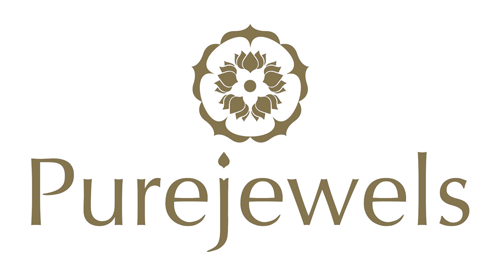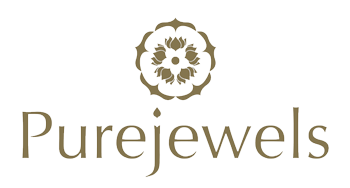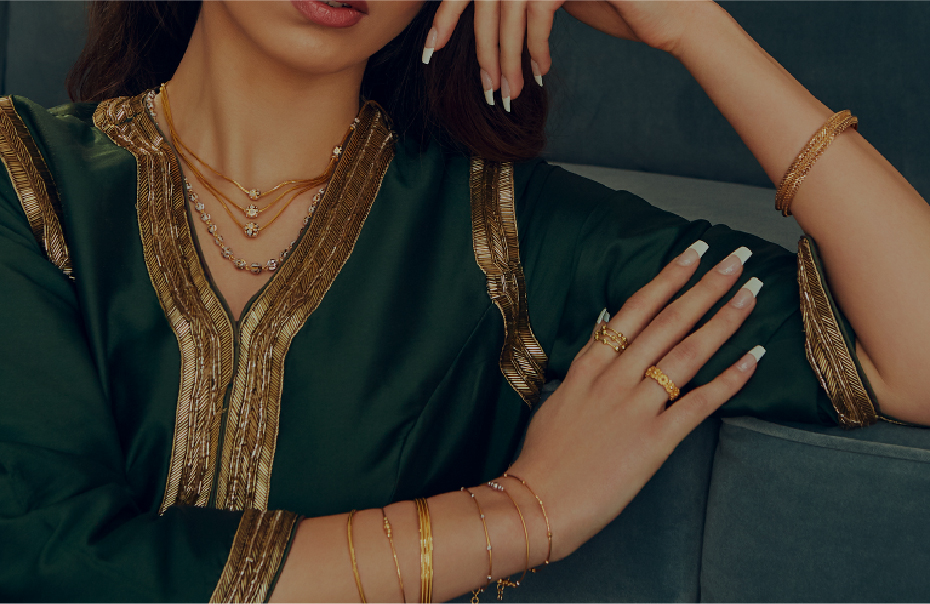Which Carat Gold is Used to Make Jewellery
Shiny, bright, and sought after, gold is a malleable and ductile metal. These properties allow it to be crafted into beautiful gold jewellery. Its lustre gives gemstones a richness to their sparkle. However, pure gold is very soft, so to create wearable jewellery, gold is often blended with other metals form a stronger alloy. The added metal percentage determines what carat the gold is.
The word carat (abbrievated as ‘ct’) is a unit of measurement for the fineness of gold alloys. The fineness of gold is represented by the proportion of pure gold out of 24 parts.
In other parts of the world, the word ‘Carat’ is used only to measure gem weight, with the term ‘Karat’ (or ‘k’) used to reference gold fineness. In the UK, however, we use the term Carat to refer to both.
Why do we Alloy gold?
Pure gold is very soft, so for jewellery to last, we must alloy it. Alloying gold adds tensile strength and improves the hardness, making it durable enough to wear as jewellery.
Whilst pure 24ct gold can be used to make gold jewellery, its tendency to deform and scratch means that it is generally avoided. This softness also means that gemstones cant be set in 24ct, as the metal is not strong enough to hold them.
For these reasons, alloyed gold is used to make long lasting jewellery.
Choosing the Right Carat Gold for Your Jewellery
When it comes to buying jewellery, there are many factors to consider. In addition to the style and design of your piece, you also need to think about which carat of gold you want it to be made out of.
With pure 24ct gold being too soft for everyday wear, most jewellery makers use a lower carat alloy, usually between 9ct and 22ct gold. The different carats of gold have different properties, from colour to lustre, making them useful for different types of jewellery.
Let’s look at the different carats of gold, and how they compare.
9 Carat (9ct)
9ct gold is the lowest carat gold regularly used for jewellery making at 37.5% gold purity. It contains 9 parts pure gold mixed with 14 parts other metals such as silver, zinc, palladium or nickel. This makes 9ct gold one of the most robust choices for everyday wear since it is more durable than higher carat gold. However, because it contains fewer parts of pure gold, it will appear duller in colour than higher carats like 14ct or 18ct.
14 Carat (14ct)
14ct gold is 58.3% pure gold, comprising of 14 parts pure gold mixed with ten parts other metals such as silver, zinc, palladium or nickel. It is slightly softer than 9ct but still sturdy enough for everyday wear and tear. It has a brighter yellow hue than its 9ct counterpart due to its higher concentration of pure gold and can last years without tarnishing or losing its colour if taken care of properly.
18 Carat (18ct)
18ct gold is composed of 18 parts pure gold mixed with six parts other metals such as silver, zinc, palladium or nickel. As 18ct gold is 75% pure gold, it is slightly softer than its lower carat counterparts, buts its colour is much richer, making pieces made from this alloy look and feel luxurious. Its superior lustre and comparative durability makes 18ct a popular choice for fine jewellery pieces.
22 Carat (22ct)
22ct gold is the highest purity gold used in jewellery making, composed of 91.6% pure gold. 22ct gold is commonly used in traditional and high-value jewellery, especially in cultural or ceremonial jewellery. It’s blend of strength and vivid hue makes it a desirable option for fine jewellery, and it is often seen in wedding bands, engagement rings, earrings, necklaces, and bangles. This high gold content gives it a rich yellow colour, unparalleled in lower carat jewellery and is less prone to tarnishing over time. 22ct gold is also suitable for jewellery set with diamonds and other gemstones.
PureJewels has a wide range of products crafted in 22ct gold. We love its autumn-like hue and glow.
Choosing which carat gold to buy your jewellery can seem daunting, but understanding their differences can help you make an informed decision that best suits your needs and budget. For example, if you are looking for something sturdy that won’t break the bank, then 9ct may be your best bet, whereas if you’re looking for something luxurious and striking, then 22ct may be right up your alley! Remember to keep your jewellery clean and polished regardless of your choice so it’ll continue shining for years!










